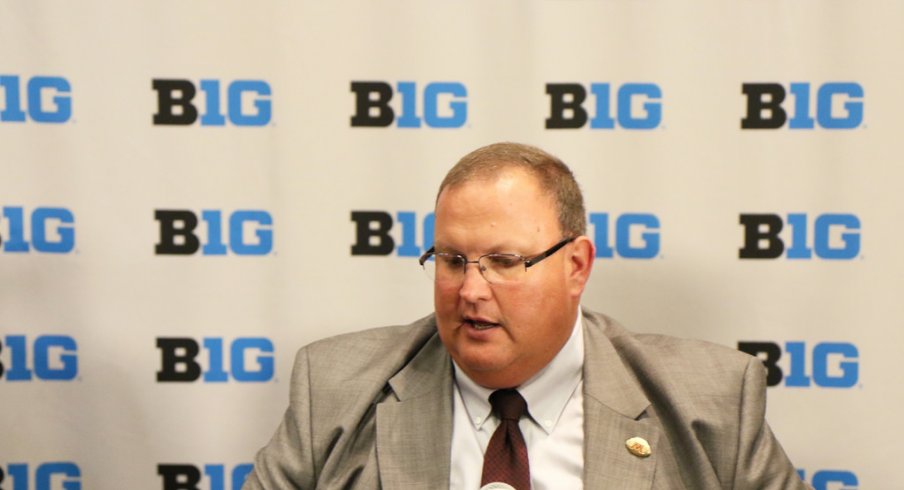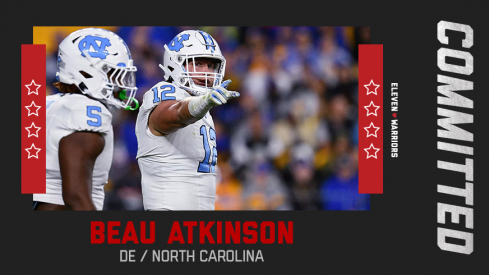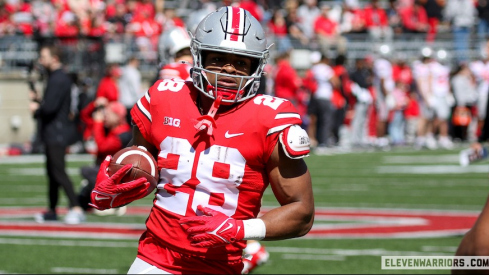CHICAGO — The throng of reporters surrounding Michigan head coach Jim Harbaugh’s podium Monday at Big Ten Media Days sprawled throughout the Grant Park room at the Hyatt Regency McCormick Place. There will be a similar one around Ohio State head coach Urban Meyer today. Michigan State’s Mark Dantonio will draw his fair share of media members, as well.
These are the three top current programs in the Big Ten. People want to talk to their coaches.
The Buckeyes, Wolverines and Spartans get all of the attention, and it’s hard to argue it’s unjustified. Ohio State and Michigan State have combined to win the last three league titles and Michigan, under Harbaugh, has returned to the national spotlight.
They’ve helped bring the Big Ten back from the dead.
But while all three programs each have had their own time to shine, they’ve also created a slight problem within the league: The balance between the divisions in the conference is somewhat lacking. All three programs reside in the Big Ten East — along with Penn State — and the conference’s balance of power is leaning, heavily, toward that side.
Head coaches from the Big Ten West said Monday, however, these types of things go in cycles.
“If you look at our games a year ago, when we played teams from the East we held up pretty good,” Minnesota coach Tracy Claeys said. “We didn’t win all of the games, but they were competitive.”
“I think, no matter what you do, you’ll see that back and forth different years, which one is the power and which one is not. You’re never going to get that right. There’s always going to be variances, but I don’t think it will always be the East.”
Purdue head coach Darrell Hazell echoed those remarks.
“Every year it takes on its own different identity,” he said. “Obviously, you can look from the telescope and say, ‘OK, this team should be good and this team has been good,’ but you really don’t know that.”
Ohio State and Michigan are longstanding college football powers. Under Mark Dantonio, Michigan State also put itself into the upper echelon of the sport. It may be quite difficult, or impossible, for the schools in the Big Ten West to reach that level.
But they can certainly be better. Outside of Wisconsin, the teams in the West have not been able to sustain any sort of level of consistency to improve the strength of the conference.
“Traditionally, you’ll have two or three teams that have been consistent over the last 10 to 15 years, but then you’ve got fluctuation in other programs,” Hazell said. “It’s year to year.”
The sooner it happens, the better off the league will be.


